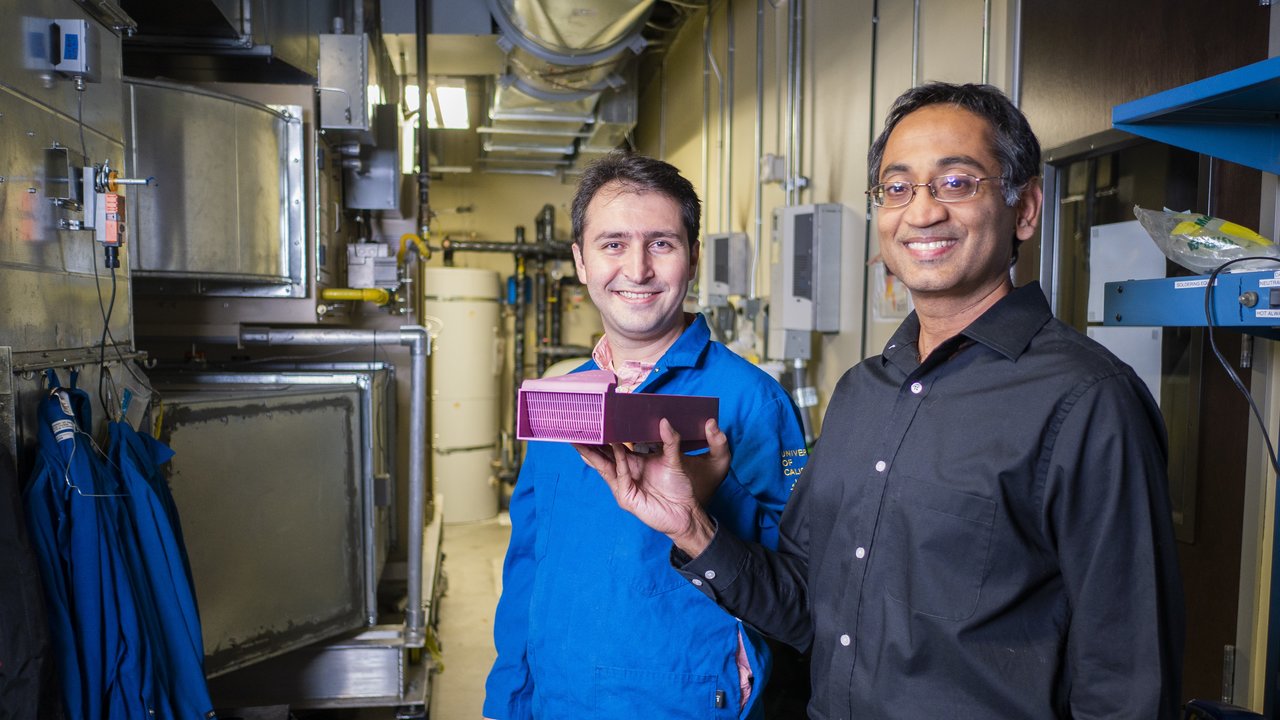Vinod Narayanan partners with Carnegie Mellon for $2.4M ARPA-E award to advance 3D-printed heat exchangers
By Noah Pflueger-Peters and Ali Loge
Mechanical and aerospace engineering professor Vinod Narayanan is co-PI on a new $2.4 million grant from The Department of Energy’s Advanced Research Projects Agency – Energy (ARPA-E). The project is led by Carnegie Mellon University and involves collaborations with national laboratories and industry.
Over the next three years, Narayanan will work with professor Anthony Rollett’s materials science and engineering lab at Carnegie Mellon to develop a 3D-printed heat exchanger for high temperature and high pressure applications.
Heat exchangers transfer heat from one fluid to another without the fluids coming into contact with one another. They are widely used in power generation, space heating, refrigeration, air conditioning and transportation, and can advance development of high-efficiency modular power systems. However, most are extremely large and expensive. To Narayanan and Rollett, 3D printing offers a potential solution to these problems.
“There are very few materials and even fewer fabrication methods that can handle those pressures and temperatures,” said Narayanan. “This makes a 3D-printed heat exchanger ideal. Since it’s all a single monolithic block, you won’t have failures at welded joints or brazed joints like you might with traditional manufacturing methods.”
Rollett’s team at Carnegie Mellon will focus on printing the 3D exchanger and studying the materials to characterize them and understand their microstructure, strength and creep. They will then send a sample design to Narayanan for pressure testing and thermal characterization to see if it’s capable of withstanding ARPA-E’s requirements of 800-850 degrees Celsius and 250 bar.
If the tests are successful, Narayanan will develop numerical models of what a large-scale version of the technology might look like. The team will then work with their partners in industry and at Carnegie Mellon to look at cost modeling and potential markets for the technology.
The grant is the second $2 million+ grant Narayanan and Rollett have received from the Department of Energy, one led by each institution. The duo received $2.2 million in 2018 from the Solar Energy Technologies Office for a project led by Narayanan that looked at heat exchangers that use molten salt as a working fluid for supercritical carbon dioxide power cycles.
Along with his faculty appointment in the MAE department, Narayanan is the Associate Director of the Western Cooling Efficiency Center at the UC Davis Energy and Efficiency Institute. The research team also includes National Energy Technology Laboratory, HEXCES, General Electric, Extrude Hone, and the Colorado School of Mines.
Read Carnegie Mellon University's story to learn more.

